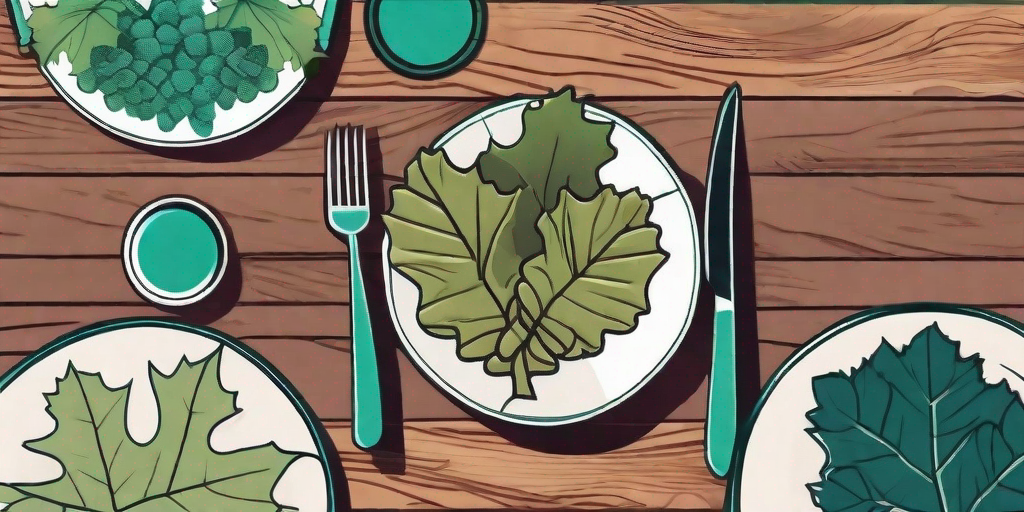
If you've ever had the pleasure of biting into a juicy dolma or savoring a tangy Yaprak Sarma, you know that grape leaves are more than just a vineyard's accessory. They are the unsung heroes of the culinary world, the green, veiny canvases that hold a world of flavors. But have you ever wondered about the versatility of these humble leaves? Buckle up, foodie friends, because we're about to embark on a gastronomic journey that will have your taste buds doing the cha-cha.
The Grape Leaf: A Brief History
From Vine to Plate
While we might associate grape leaves with Mediterranean and Middle Eastern cuisines, these culinary chameleons have been used in cooking for centuries across various cultures. The ancient Greeks and Romans, for example, used grape leaves as a wrapping for meat and fish, preserving the flavors and keeping the food moist during cooking. They were the original eco-friendly food wrappers, long before we started wrestling with cling film.
Fast forward a few centuries, and grape leaves have found their way into the hearts and stomachs of people worldwide. From the vineyards of France to the bustling markets of Istanbul, these leaves have become a staple ingredient in many traditional dishes. But why stop at tradition? The versatility of grape leaves extends far beyond dolmas and sarmas.
Unleashing the Versatility of Grape Leaves
More Than Just a Wrapper
Grape leaves are like the Swiss Army knife of the culinary world. They can be pickled, stuffed, baked, fried, or even used as a garnish. Their slightly tangy flavor and sturdy texture make them a fantastic addition to a variety of dishes. And let's not forget their nutritional value. Packed with vitamins A and C, they're a delicious way to get your daily dose of nutrients.
But the magic of grape leaves doesn't stop at the dinner table. They're also used in winemaking, where they play a crucial role in the vine's photosynthesis process. And if you're feeling particularly adventurous, you can even use them in your skincare routine. Grape leaves are rich in antioxidants, which can help to fight off skin-damaging free radicals. Who knew that the secret to glowing skin could be found in your kitchen?
Getting Creative in the Kitchen
Ready to get your hands dirty and your taste buds dancing? Here are a few creative ways to use grape leaves in your cooking:
- Stuffed Grape Leaves: This is the classic use for grape leaves. Stuff them with a mixture of rice, herbs, and spices, then simmer them in a flavorful broth until tender.
- Grape Leaf Pesto: Swap out the basil in your traditional pesto recipe for grape leaves. The result is a tangy, unique sauce that pairs beautifully with pasta or crusty bread.
- Grape Leaf Chips: Toss grape leaves in olive oil, sprinkle with sea salt, and bake until crispy. They're a healthier alternative to potato chips and just as addictive.
Grape Leaves FAQs
Where Can I Buy Grape Leaves?
You can find grape leaves in the international foods aisle of most supermarkets, at specialty food stores, or online. They're usually sold in jars, either pickled or packed in brine.
If you're lucky enough to live near a vineyard, you might be able to pick your own grape leaves. Just make sure to ask permission first, and avoid any leaves that have been sprayed with pesticides.
How Do I Prepare Grape Leaves for Cooking?
If you're using fresh grape leaves, blanch them in boiling water for a few seconds to soften them up. If you're using jarred grape leaves, rinse them under cold water to remove the brine, then pat them dry.
When you're ready to use your grape leaves, lay them out flat with the vein side up. This will make them easier to roll if you're making stuffed grape leaves.
Can I Eat Grape Leaves Raw?
While grape leaves are technically edible raw, they're usually too tough and fibrous to be enjoyable. Cooking them softens their texture and brings out their unique flavor.
Wrapping Up
So there you have it, folks. Grape leaves: they're not just for stuffing anymore. Whether you're whipping up a batch of dolmas, making a tangy pesto, or just snacking on some homemade grape leaf chips, these versatile leaves are sure to get your taste buds dancing.
So why not take a leaf out of our book (pun absolutely intended) and start experimenting with grape leaves in your kitchen? Your palate will thank you.











